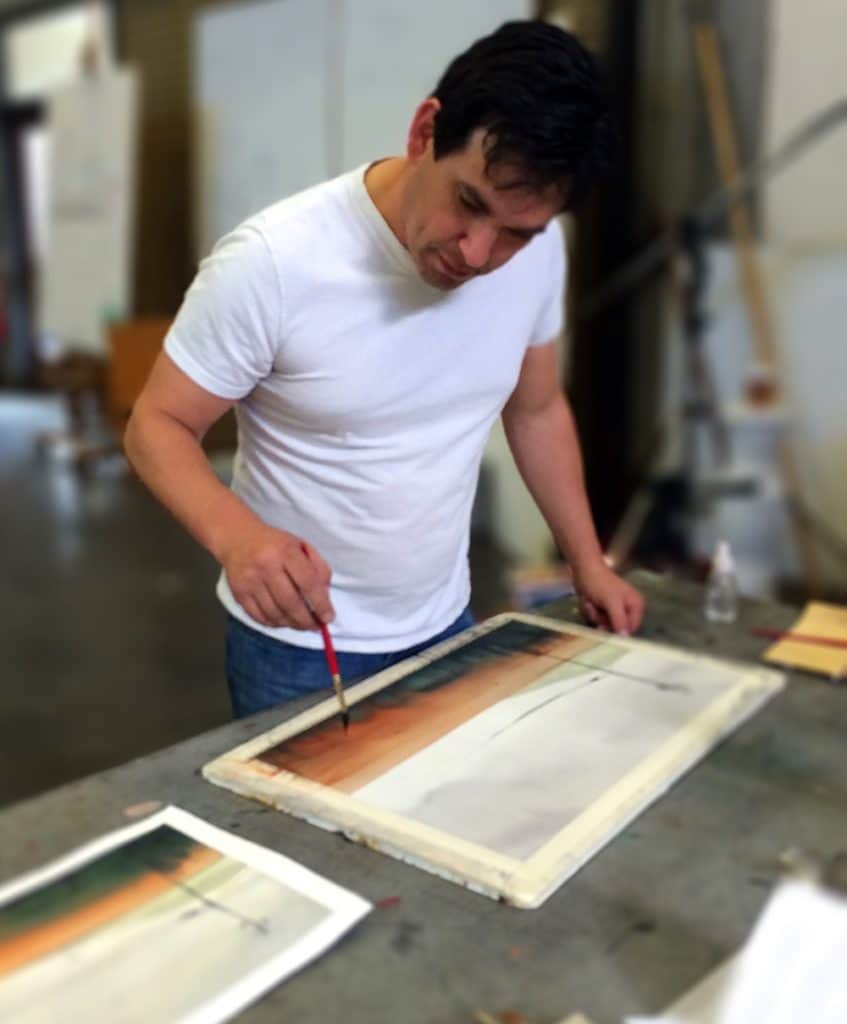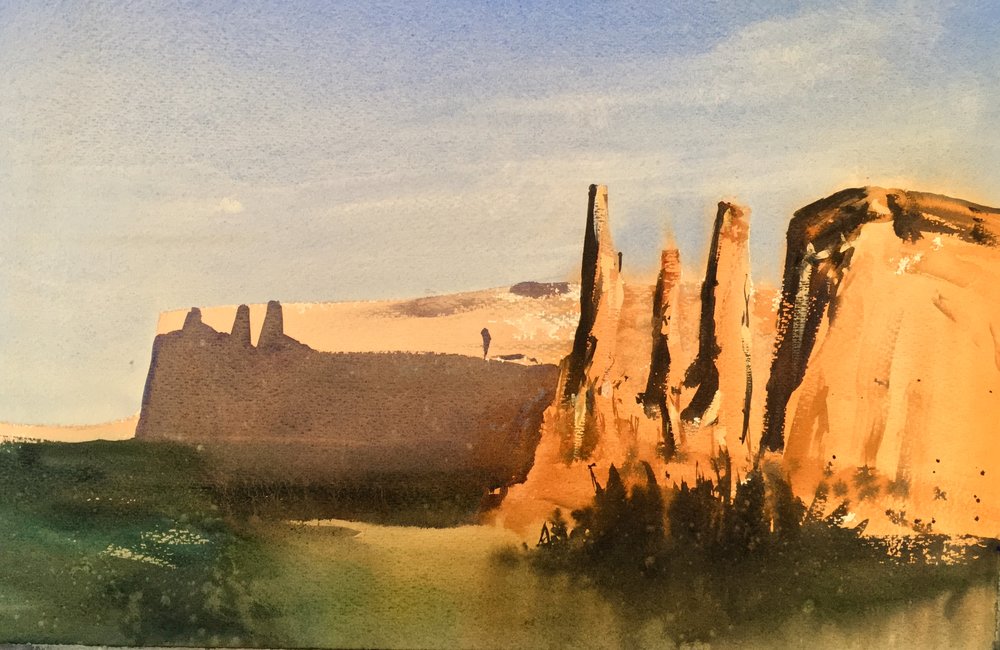There’s no shortcut to success: You’ve got to put in the time and the brushstrokes if you want to improve. The good news is that every painting you do has something to teach you and gets you one step closer to realizing the vision you have for your work.
In these “before” and “after” paintings, watercolor artist Stephen Berry illustrates this creative and technical evolution.

“When I’ve had the chance to paint recently, I’ve been exploring new shapes and compositions. It’s a fun process, and essential, I think. I’ve been told that one of the worst things for an artist is to get relatively good at something and then trap yourself and just do it over and over again. That takes all the fire out of the thing!
“Part of the fun of making art, for me, is exploring new experiences and techniques—taking risks, challenging myself, and playing in a space where I don’t always know exactly what’s going to happen. Of course, to work in this manner I have to be willing to break a few eggs along the way. In my experience, that’s the best way for me to learn. As such, I wanted to share some of my mess-ups, along with the more successful paintings that followed, informed by my earlier struggles.
Florals

Before: “This floral was done as a demo in a workshop. Not terrible, but not my favorite. I wasn’t paying enough attention to my color palette, or the vase. The goal, of course, was to provide a demo of wet-into-wet painting, and not to provide a subject that was too difficult, but still…

After: “At the end of the same workshop, however, I hammered out this pair of roses as a demo, and was quite happy with the result. (They sort of surprised me!) I paid attention to detail when I needed to, particularly on the vase and stems, let the simpler composition dictate my more cohesive color choices, and reserved my darks for only the most critical places.
Southwest Shapes and Colors

Before: “I’ve also been exploring some of the subject matter from my Southwest trip last summer. This is a strange new color palette for me. I wanted somehow to communicate the glow on the rocks, which required a thoughtful use of color, but the shapes and color scheme were all wrong for me in this piece. I admit: Sometimes I get halfway through a painting and lose interest, and that was the case with this one. I could tell I wasn’t going to be really satisfied with the result. If I can, however, I make myself power through; the paintings don’t take that long anyway. There is lots to learn by going all the way through the painting process, particularly when I try a similar painting later.

After: “This was a similar painting done later. One of my absolute favorite destinations in the southwest was Antelope Canyon. I did my research and made a point to arrive around noon and go to the lower (less visited) canyon. Heaven! Such amazing rock formations. Sigh…
“My color palette was definitely influenced by my earlier Southwest attempt, as I tried to mute my color choices and reserve my higher chroma areas for special areas of the painting. I also attempted to integrate more wet-into-wet work into this one than my previous piece, so that the harder lines stood out more and had something to contrast against. I was very drawn to the idea that the composition is really an abstract born out of organic shapes, and it needs to work as one before I even think of it as the actual location I went to. I paid close attention to the arrangement of lines, as well as chroma and value contrasts.
Urban Perspectives
These last two paintings were done on the same day. Sometimes, I like to work on two pieces at once. As the first wash on one dries, I begin work on the second painting. I find it can help keep things fresh and less overworked, and helps foster the mentality that “I’ve got another painting waiting for me, so why futz over this one and make too many unneeded marks!”

Before: “This first one is from Barcelona. I had a great time drawing it and was in love with that cast shadow on the face of the skinny building, but I began to recognize (only part way through) that I didn’t really have an interesting focal point or human element. I also felt that the colors for my first wash were too strident and lacked variety. The sky was too blue and the building too yellow and without variety. My use of color should have helped create a sense of depth and varied light, and it didn’t.

After: “I made this painting from a photo I took at a train station in Spain. I’ve had people think it was BART, which I can see very much as well. Of course, the goal is for it to be any train station anywhere. I wanted to capture that sunny anticipation of waiting.
“My reference photo didn’t have the person, but the moment I took the picture, I knew the sort of subject I wanted. That was a clear shift from the previous painting, where I recognized (only late in the game) the lack of a story. Both paintings are very perspective dominant, but this one features a great deal more trapped light which drew my eye into the little pockets. I muted my colors and focused on a choosing a warm, dominant color scheme. I also tried to vary my values more, by pushing my darks in key areas, while modulating my other tones to get a fuller range.
For sure, the time I took to thoughtfully self-critique the trip-ups on the previous painting informed all sorts of decisions on this one.”
For more inspiring stories like this one, sign up for our free weekly e-newsletter.








Kudos to Mr. Berry for sharing his insight. Very informative tips and advice. Thanks!
Thank you so much for sharing! Your insights were helpful to me- and your second paintings really showed how you could incorporate what you felt was missing and make a truly dynamic painting!
I have been following Stephen Berry’s blog and art for the past couple of years. You can definitely tell that watercolor is his passion, and I have enjoyed reading his entries as he learns and grows in the workshops he takes with other artists. It is always a treat to read his blog as he so openly shares his knowledge of the watercolor medium with others.
Do you have a workshop in the Bay Area anytime soon?